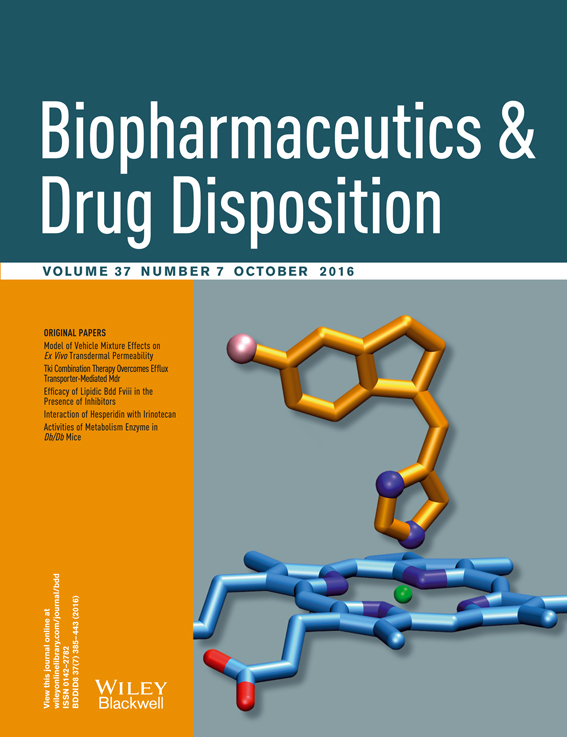Cyp3a11-mediated testosterone-6β-hydroxylation decreased, while UGT1a9-mediated propofol O-glucuronidation increased, in mice with diabetes mellitus
Abstract
The db/db mouse is one of the most popular animal models for type 2 diabetes mellitus, but changes in the activities of important P450s and UGTs are still not completely clear. This study was designed to investigate the alterations of major hepatic cytochrome P450s and UDP-glucuronyltransferase enzymes in db/db mice. Mouse liver microsomes (MLMs) were obtained from male db/db mice and their wild type littermates. After incubation of the substrates separately with MLMs, the samples were pooled and analysed by high-throughput liquid chromatography–tandem mass spectrometry system for the simultaneous study of nine phase I metabolic reactions and three glucuronidation conjugation reactions to determine the activity of the metabolic enzymes. Compared with normal controls, the Clint estimate for testosterone-6β-hydroxylation was lower (46%) (p < 0.05), while the Vmax and Clint estimates for propofol O-glucuronidation were 5-fold higher (p < 0.01) in the liver microsomes from db/db mice. There was no significant difference in phase I metabolic reactions of phenacetin-O-deethylation, coumarin-7-hydroxylation, bupropion-hydroxylation, omeprazole-5-hydroxylation, dextromethorphan-O-demethylation, tolbutamide-4-hydroxylation, chlorzoxazone-6-hydroxylation and midazolam-1-hydroxylation and in glucuronidation reactions of estradiol 3-O-glucuronidation, and 3-azido-3-deoxythymidine glucuronidation. The data suggest that, in db/db mice, the activity of Cyp3a11, catalysing testosterone-6β-hydroxylation, decreased, while the activity of UGT1a9, catalysing propofol O-glucuronidation, increased. Copyright © 2016 John Wiley & Sons, Ltd.




